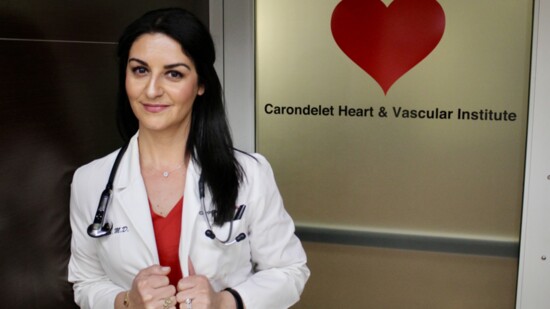An estimated one in four female deaths is caused by heart disease, which is the leading cause of death for women in the United States. It’s important for women to be aware of the risk factors, signs, and symptoms of heart disease.
“Women present with any combination of shortness of breath, tiredness, pain in neck, jaw, throat, upper back pain with or without activities,” explained Dr. Kahroba Jahan, a cardiologist at Carondelet St. Mary’s Hospital.
She explained that “heart disease" is an umbrella term which includes many different conditions:
· Coronary artery disease: This is the most common type of heart disease in the United States and leads to what is known as a “heart attack.” The heart is a pump and has its own blood supply, which are called coronary arteries. Coronary artery disease is when these vessels are clogged with cholesterol plaque interfering with blood flow.
· Arrhythmia: This is when electrical activities of the heart are interfered with. Some examples are atrial fibrillation or atrial flutter, which is characterized by irregular heartbeat.
· Heart valve disease: Some of the most common forms of valve disease are mitral valve or aortic valve stenosis, or what is called a leaky valve.
· Congestive heart failure: This refers to when the heart muscles become weak and can lead to cataclysmic “pump failure.”
The traditional risk factors for heart disease are family history, high cholesterol, high blood pressure, diabetes, smoking, sedentary lifestyle, and obesity. These affect women and men equally.
“Age is a risk factor for women – the older you are, the higher your risk of heart disease. Women, in general, developed coronary artery disease 10 years later in life than men unless they have diabetes,” said Dr. Jahan.
Mental stress and depression affect women’s hearts more than men’s. Depression makes it difficult to maintain a healthy lifestyle and follow recommended treatment. Low levels of estrogen after menopause pose a significant risk factor for developing cardiovascular disease in the smaller blood vessels. Fortunately, you can take steps to reduce your risk of developing heart disease.
“You cannot change aging or family history, so focus on what you can change. These steps include getting more exercise. The American Heart Association recommends 150 minutes of exercise per week (such as 30 minutes of moderate-intensity walking daily),” she said. “You know yourself better than anyone else. If you feel something is wrong, do not ignore it and hope it will just go away. Talk to your doctor.”
Women’s health took center stage at the World Economic Forum in Davos earlier this year with the presentation of the first-ever report on the gender health gap and its health and economic toll. Authored by the McKinsey Health Institute and World Economic Forum, the report found addressing the health gap—which currently equates to 75 million years of life lost due to poor health or early death—could boost the global economy by at least $1 trillion annually by 2040.
